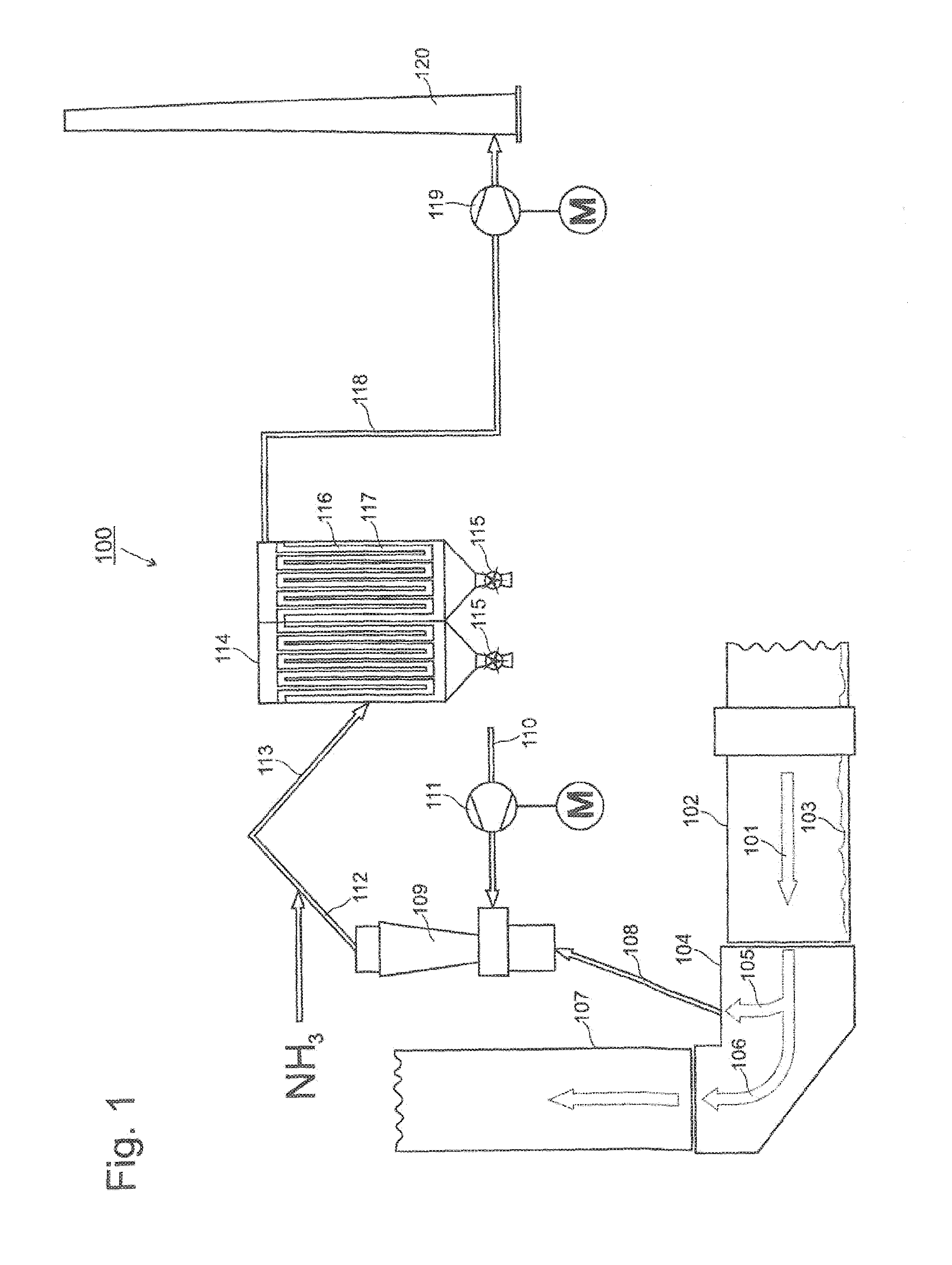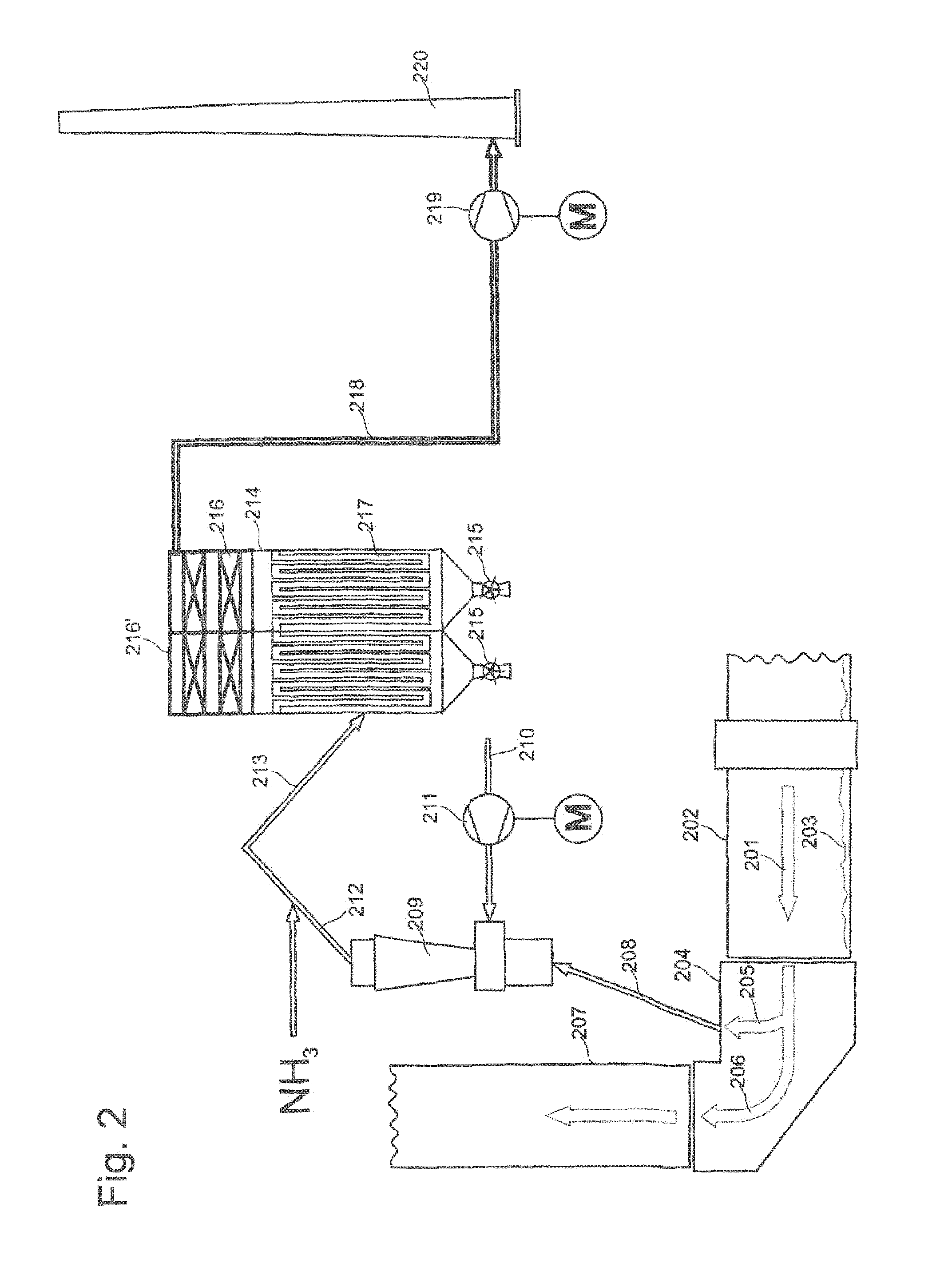Method for denitrification of bypass exhaust gases in a plant for producing cement clinker
a technology of bypass exhaust gas and cement clinker, which is applied in the direction of separation process, furnace, lighting and heating apparatus, etc., can solve the problems of classical catalyst poison being masked by chemical reactions, the formation of dioxins and furans is not suppressed so well, and the formation of dioxins and furans is not suppressed. , the effect of less abrasion and poisoning
- Summary
- Abstract
- Description
- Claims
- Application Information
AI Technical Summary
Benefits of technology
Problems solved by technology
Method used
Image
Examples
Embodiment Construction
[0030]FIG. 1 shows a flow diagram 100 of a first plant configuration for carrying out the process of the invention. The in-principle structure of a plant for producing cement will here be assumed to be known. Hot combustion gases 101 pass through a rotary tube furnace 102 and heat this for sintering of the cement clinker 103 present in the rotary tube furnace 102. The combustion gases 101 leave the rotary tube furnace 102 at the left-hand end where the rotary tube furnace 102 opens into a rotary tube furnace inlet chamber 104. In the rotary tube furnace inlet chamber 104, the combustion gases cool to a great extent because they impinge there on gases from a heat exchanger (not shown here). On cooling of the combustion gases 101, alkali metal halides (LiF, LiCl, LiI, NaF, NaCl, NaI, KF, KCl, KI) and alkaline earth metal halides (MgF2, MgCl2, MgI2, CaF2, CaCl2, CaI2) and alkali metal and alkaline earth metal sulfates (Li2SO4, Na2SO4, K2SO4, MgSO4, CaSO4) condense and are, following th...
PUM
| Property | Measurement | Unit |
|---|---|---|
| temperature | aaaaa | aaaaa |
| temperature | aaaaa | aaaaa |
| temperature | aaaaa | aaaaa |
Abstract
Description
Claims
Application Information
 Login to View More
Login to View More - R&D
- Intellectual Property
- Life Sciences
- Materials
- Tech Scout
- Unparalleled Data Quality
- Higher Quality Content
- 60% Fewer Hallucinations
Browse by: Latest US Patents, China's latest patents, Technical Efficacy Thesaurus, Application Domain, Technology Topic, Popular Technical Reports.
© 2025 PatSnap. All rights reserved.Legal|Privacy policy|Modern Slavery Act Transparency Statement|Sitemap|About US| Contact US: help@patsnap.com



